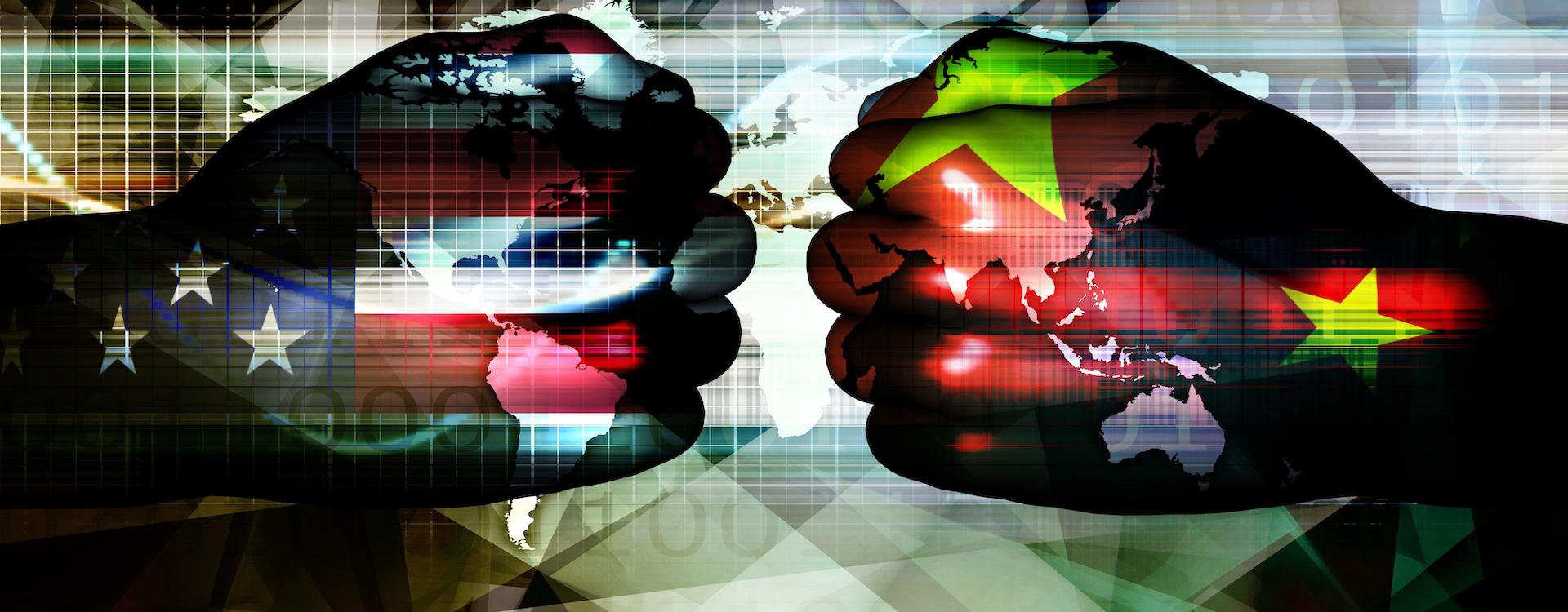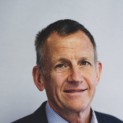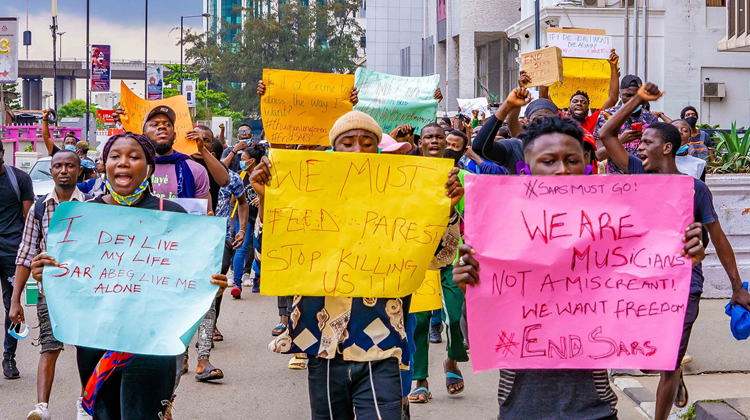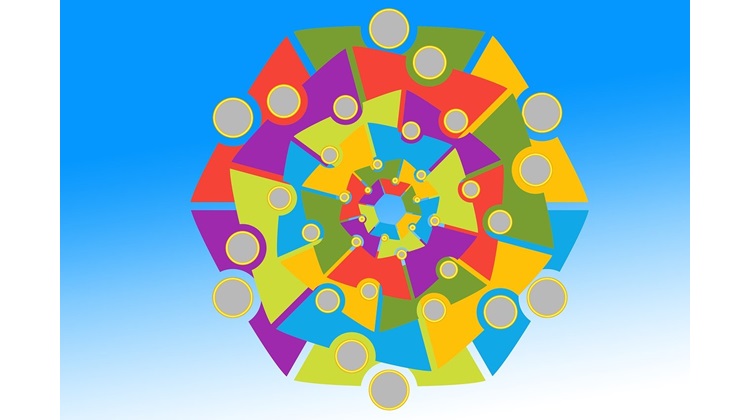Peak China, a declining US, and the future of Africa

China-US tensions constrain Africa’s growth potential.
At the end of 2022, the African Futures & Innovation programme at the Institute for Security Studies published a set of global scenarios on how events in the rest of the world could impact Africa. We chose a forecast horizon two decades into the future and constantly updated our projections.
Africa has again become an area of competition between the West, China and Russia, with important implications for its development potential. In the alternative global futures we modelled, the current trajectory most closely aligns with what we termed a Divided World scenario, reflecting disaffection with the Western rules-based system.
The Divided World future is a world of clubs, such as the Group of 7 (G7), the Brazil-Russia-India-China-South Africa bloc (BRICS) and others in the global south. Regionalism, rather than a global rules-based system, is the order of the day as Asia, the West, and others look closer to home for their future.
The World at War scenario is the worst case for everyone, as overall gains are below any other. In this scenario, Russia’s invasion of Ukraine eventually morphs into successive wars that pit Russia against the North Atlantic Treaty Organization, with support from China. This is followed by China’s invasion of Taiwan and subsequently rising tensions, ultimately conflict, between China and India as the two global powers come to blows towards the end of our forecast horizon.
The Growth World scenario leads to better economic results in the next decade, but to the detriment of equality and efforts to contain global greenhouse gases, resulting in negative climate change impacts. This world is where private capital pursues profit with scant regard for environmental impact. The result is eventually unsustainable.
Africa needs to have a serious conversation about population growth if it is to grow economically more rapidly
In an ideal Sustainable World scenario that maximises Africa’s economic potential, Africa grows at more than 7% – compared to just 4% in the Divided World. Our modelling for Africa consists of eight sectoral scenarios done for each country ranging from the impact of better education to a manufacturing transition and the full implementation of the African Continental Free Trade Area. The results reflect Africa’s development potential given a facilitating global context.
The outcomes from these four scenarios are starkly different.
For example, if we compare the Sustainable World with the Divided World, the number of extremely poor people in Africa will be almost 113 million instead of 407 million by 2043. That is, of course, much better than the 548 million extremely poor people projected in the World at War scenario.
Our forecasts underline the structural nature of Africa’s development deficit and the long time horizons required for a degree of catch-up in key measures such as average GDP per capita. Even in the ambitious Sustainable World, Africa’s GDP per capita will only be 45% of the global average in 2043 – a difference of US$13 700.
The findings also underline how global developments, such as Russia’s invasion of Ukraine and Chinese-United States (US) tensions, impact Africa. All four of our scenarios reflect the tectonic shifts in power and influence that would see China eventually overtake the US as the single most powerful country in the world.
However, the West (Europe, North America and others, including Japan) will remain globally dominant – richer and technologically more advanced than other regions. Only great power implosion in the US or the breakup of the European Union (EU) could see China achieve untrammelled superpower status. It’s ironic that China, on its current centralised trajectory under Xi Jinping, is steadily more at risk of internal turbulence as incomes rise, its population ages, and it struggles to maintain its rigid social control system.
How do global players construct a collaborative rather than competitive global system that will enable humanity to survive and prosper?
Our scenarios reflect a more complex, regionalised world – crowded and multipolar – than in any recent century. This world will inevitably have to confront major challenges, the impact of climate change in particular. The huge disparities between the rich West and the Rest will also confront leaders. It seems clear that without a Herculean effort to develop, migration from poor regions and the extent of global disparities will impact rich and poor countries alike.
Eventually, a world where power is diffused may be more stable, but it also seems inevitable that the current transitions will prove unsettling. Change is always difficult, and the associated effects will buffet small countries.
The push by many, the US, China, Russia and others, for Africans to choose sides in these times doesn’t serve African interests. Africa is now almost equally connected with traditionally dominant (US and EU) and newly emerging (China, India, among others) partners.
Beyond Africa’s development needs, the accelerated impact of climate change will require an entirely different mindset and approach to carbon emissions and growth. Although emissions per capita in Africa are very low, there’s rapid continental population growth, and an expansion of electricity access and greater energy intensity as incomes rise. This points to a continent that, by 2068, will emit more carbon from fossil fuels than China.
Africa has again become an area of competition between the West, China and Russia, with important implications for its development potential
Africa isn’t currently responsible for climate change but will suffer disproportionately from the associated effects and eventually become a major emitter without embarking on a different growth trajectory.
Among others, Africa needs to have a serious conversation about population growth in order to grow economically more rapidly, improve the prospects for its young population and curb greenhouse gas emissions. Rapid population growth in many African countries is both a drag on their development and will undermine global sustainability in the long term.
Eventually, much deeper economic and political integration complemented by much more rapid and sustained economic growth in Africa could offset the continent’s limited role in shaping global orientations – but that needs to occur sustainably.
How do global players construct a collaborative rather than competitive global system that will enable humanity to survive and prosper in the long term, particularly in Africa? The elements are well established. Most recently, they were reiterated in the United Nations Secretary-General’s briefing to the General Assembly on Priorities for 2023. ‘The world,’ António Guterres warned, ‘is staring down the barrel of a confluence of challenges, unlike any others in our lifetime. ... This is not a time for tinkering. It is a time for transformation.’
China, on its current centralised trajectory under Xi Jinping, is steadily more at risk of internal turbulence
Many elements of an appropriate reform agenda are reflected in Guterres’s September 2021 report, Our Common Agenda. Instead of action, he warned, ‘The chances of further escalation and bloodshed keep growing.’ Among myriad priorities for urgent action, he lists an agenda for the radical transformation of the global financial architecture to place the needs of developing countries at the centre of every decision and mechanism of that system.
Ahead of the 2024 UN Summit for the Future, and its Pact, the required financial reforms were set out in a May 2023 UN policy brief in six areas ranging from global economic governance to a reformed global tax architecture. Collectively these would end divergence, financial fragmentation and geopolitical fractures, rebuild trust and support convergence towards effective global economic governance. They’d attract greater flows of private capital to invest in the capacity of developing countries to alleviate poverty and suffering.
Image: © sleepyfellow / Alamy Stock Photo






